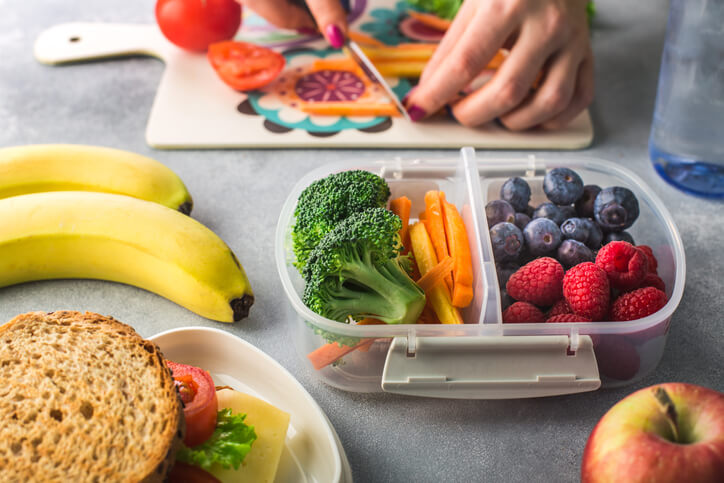March is National Nutrition Month, sponsored by the Academy of Nutrition and Dietetics, and this year the theme is “Celebrate a World of Flavors.” The idea is to embrace global cultures, cuisines and inclusion in your quest to eat right and enhance your health, and develop sound eating and physical activity habits you can follow all year long
But with prices climbing at the fastest pace in 40 years, widely impacting goods and services, you may be wondering how you can afford to choose healthy foods, maintain your selfcare routines, and get your wellness checkups – all of which can help create a healthy lifestyle – without breaking the bank.
Remember, your health and happiness depend on you choosing a healthy lifestyle, even during challenging times like the ones we are facing now. Here are some tips that can help.
Eating healthy for less
Inspired by information provided by the Academy of Nutrition and Dietetics, here are some ideas that can help you eat healthy on a limited budget.
Plan and prep – Shop with your meal plans in hand, rather than wandering aimlessly through the aisles and tossing whatever looks good into your cart. You can look for menu planning ideas, sales and special offers and recipe help on your supermarket’s website.
Take advantage of discounts and deals – The Academy says that clipping coupons or printing them from websites can save you 10 to 15% on your grocery bill. You can also check to see what your local supermarket/s, grocery stores and markets offer in the way of special deals for members. Joining loyalty programs, using shoppers’ apps, and signing up for email newsletters can save you even more.
Buy seasonal at farmers markets and roadside stands – It’s a happy surprise that foods which are at their very peak of deliciousness tend to be the least costly. Find your local U-Pick-It farms, markets and the folks who sell their produce direct to local consumers. Know what’s in season, stock up, and consider learning how to preserve food so that you can keep the savings going. One thing to be wary of is overbuying if you can’t eat it soon or keep it for a while – you could end up wasting it. (Same deal with supermarket sales, buy in bulk when you can save a lot on things that you use often and can preserve or otherwise store safely).
Consider store brands – Store brand products (also known as private label) can be anywhere from 15 to 20% less expensive than national brands. But coupons on national brands can save you more, so don’t automatically go for the store brand – make your choices on a weekly basis.
Choose unprocessed, whole foods – Fill your cart with the good stuff, fresh vegetables, fruits, whole grains and proteins like beans. Look for minimally processed whole-grain bread, pasta, and nut butters. Skip the super-processed snack and convenience foods. They tend not to be good for your wallet or your health.
Need more info? The Academy’s website includes articles, recipes, videos and educational resources on healthy food choices and fitness.
Balance is key
Choosing a variety of healthy foods across and within all food groups helps reduce the risk of preventable, lifestyle-related chronic diseases. Eating seasonally, being open to trying new things, and weekly meal planning (when you plan, you’re less likely to grab the same old stuff!) supports balanced eating.
And here’s a tip: What’s good for your teeth is usually good for your whole body. Calcium-rich foods, such as low-fat or fat-free milk, yogurt and cheese, fortified soy drinks and tofu, canned salmon, almonds and dark green leafy vegetables help promote strong teeth and bones. So does phosphorus, found in eggs, fish, lean meat and dairy products.
Vitamin C promotes gum health, so eat plenty of citrus fruits, tomatoes, peppers, broccoli, potatoes and spinach. But do be aware that the acidic content of citrus fruits and drinks (ditto for tomatoes) can weaken your tooth enamel. Limit your consumption of acidic foods, and when you do drink or eat acidy foods rinse your mouth with water and wait an hour or so before brushing so that you don’t permanently damage your dental enamel.
Remember that eating healthy is just part of maintaining a healthy lifestyle. Getting your wellness and dental checkups is critical to your overall health, as well. If budget is a concern, consider a dental savings plan, which can save plan members 10-60% on most dental procedures. Many plans also come with other wellness savings, such as discounts on prescription drugs, hearing, vision, and chiropractic care, as well as telehealth services. Learn more about dental savings plans here. See how you can lead a happier, healthier life today!

 Login
Login